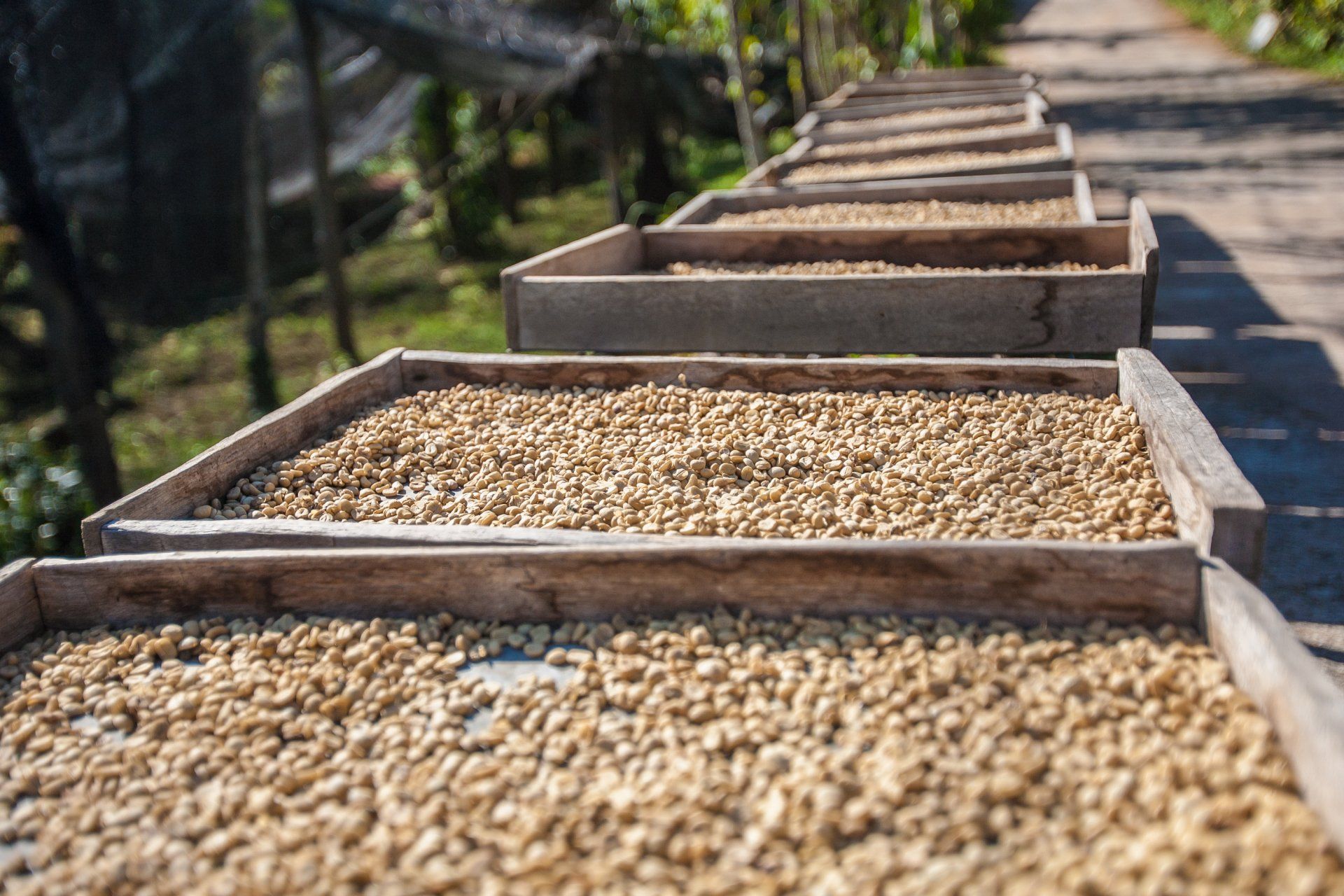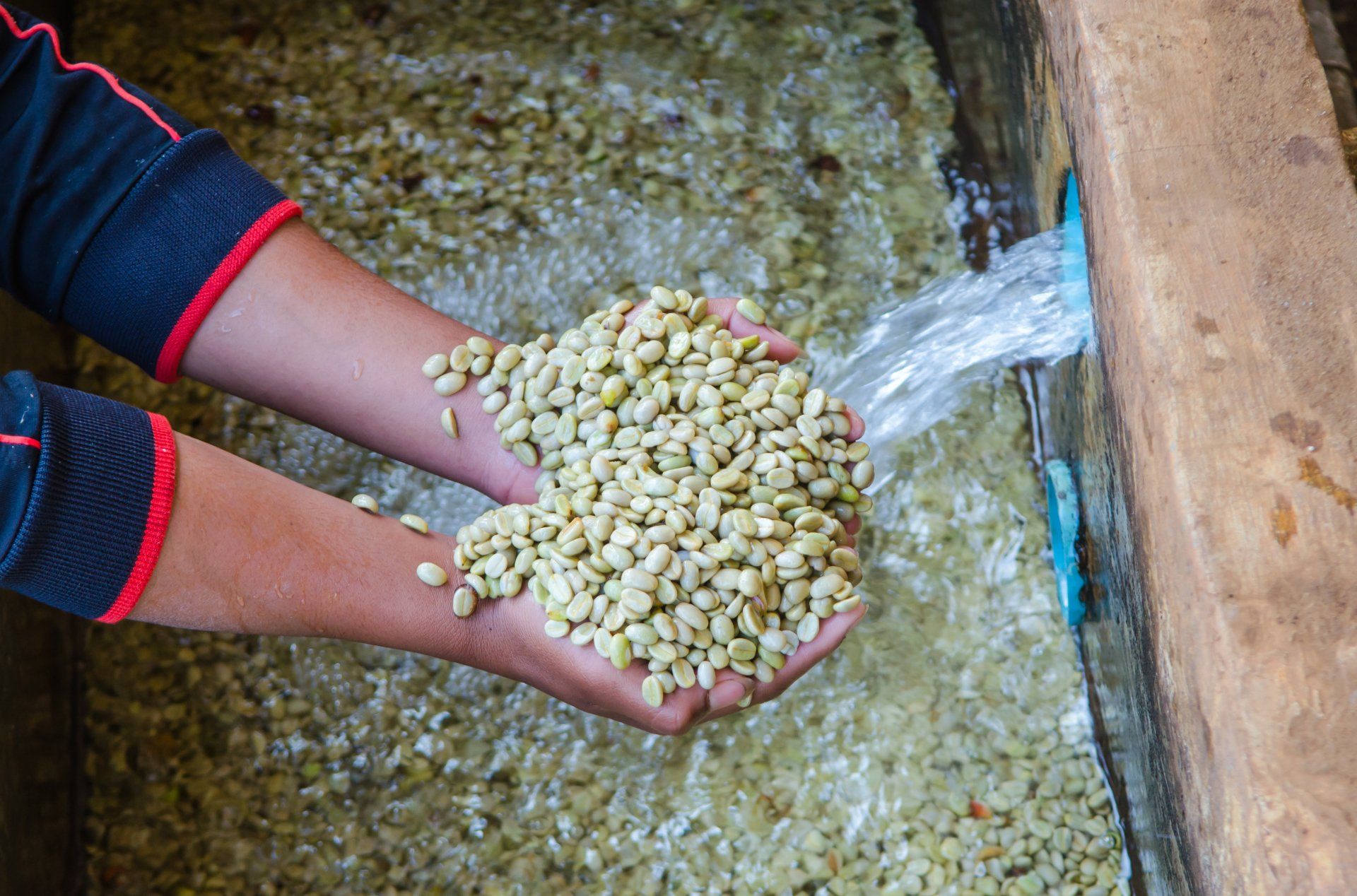Processes
Via natural, via washing and semi-washes
70% of the world's coffee production comes from family farms, with areas under 10 hectares. The crop and harvest, therefore, are very little mechanized and much of the work is done manually. For this reason, the quality of the process that transits the coffee, from the plant until it reaches our cup is very important.
From the moment the coffee is planted, it takes from 3 to 4 years until it gives the first fruits. The quality of the varietal, the micro climate of each farm, the characteristics of the land, the height and shade of the coffee plantations, provide the unique characteristics of each grain. That's why the type of harvest and finally, the process used to treat the beans, will determine the final taste of the coffee. Any failure in any of these points can affect both the intrinsic properties of the grain and the final quality.
Once the ripe cherry is harvested, the first process that the grain undergoes is the separation of the grains from their outer layers (the mucilage and the husk) that are glued to a thin parchment that covers them, and that, with the already dry grains , it is removed just before being bagged. To perform this process, there are different types of methods.

Natural
It is the oldest and simplest method, and as the name implies, it does not require the use of water. Once the coffee cherries are harvested, they spread out on a cement terrace for a few weeks where they dry up and harden slowly with the loss of moisture. The cherries have to be removed continuously to ensure a homogeneous drying. Then the grain is released from the outer layers manually or mechanically, in a later phase called threshing.
The coffees treated in this way usually give cups with a good body, with chocolaty or fruit notes, but also earthy and without the finesse of the coffees treated by the wet way. They are commonly known as "natural" coffees.

Washed
It is based on the fermentation of the mucilage by the combination of water and temperature. The water is used to transport grain and cherries with lower density, when floating they are removed making the first screen for quality. Then they go through a peel remover.
Once without a shell, the grains are put into tanks where the enzymes that cover them ferment, a phase that lasts between 12 and 36 hours and can be done dry or submerged in water. Then the coffee is washed and spread in patios or mechanical dryers, where they have to be removed until reaching 12% humidity, a degree that guarantees that unwanted fermentations will not occur during transport.
These coffees give cups with less body, but cleaner and more uniform, more floral and fruity. These are the so-called "washed" coffees.

Semi-Washed
It is the combination of the two previous methods. Here the cherry is pulped as in the wet method, but instead of removing the mucilage by fermentation or mechanically, it is left stuck to the grain and the coffee is dried in patios or mechanical dryers until it reaches the optimum moisture level. Coffee is classified depending on the percentage of mucilage that sticks. The cup will provide mixed characteristics of the two previous methods.
These are the coffee known as "semi-washed" or "honey" in Central America and "natural pulped" in Brazil.



